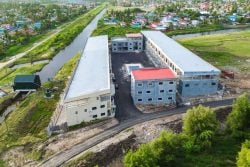Dear Editor,
I write today regarding the dark side to the construction of highways and bridges, which has often had an entrenched racial segregation motive, especially in the United States, where these infrastructures became physical barriers separating white and minority neighbourhoods. One of the most cited examples is Robert Moses’ highway projects in New York, which deliberately cut through Black and Latino communities, isolating them from wealthier, predominantly white areas. Similarly, in cities like Detroit and Los Angeles, highways were routed through minority neighbourhoods, displacing families and businesses and cutting off access to vital resources like education, healthcare, and employment. These divisions have only deepened racial disparities in wealth and opportunity.
In recent years, urban planners have begun addressing these injustices, focusing on equitable transportation and community-centred infrastructure projects, such as the efforts in Boston’s Big Dig project, which aimed to reconnect neighbourhoods previously divided by highway construction. However, the legacy of using infrastructure to enforce racial barriers continues to shape urban landscapes and racial inequality today.
In Guyana, infrastructure development has largely been driven by political priorities, often aligning with ethnic voting patterns. For example, under the PNC, roads and bridges, including the Linden highway were constructed primarily in Afro-Guyanese-dominated regions, while PPP governments have historically prioritized infrastructure in Indo-Guyanese areas like Berbice and West Demerara. Although not as explicitly racial as the U.S. examples, these projects reflect the deepening of ethnic divides. Economic opportunities and access to resources like agriculture markets or public services tend to follow these politically motivated developments, further reinforcing the division between the country’s racial and ethnic groups.
Looking ahead, a solution to this undercurrent of racial and political favouritism in infrastructure development lies in adopting a more inclusive and data-driven approach to planning. Governments, both in the U.S. and Guyana, should prioritize projects that bridge, rather than reinforce, existing divides. Community consultation should be mandatory, ensuring that the voices of marginalized groups are heard and their needs addressed. Additionally, transparent funding mechanisms—where project selection criteria are based on need, impact, and inclusivity—can help reduce political bias. In Guyana, this could mean allocating funds equally across ethnic regions or focusing on national development that benefits all citizens, regardless of political allegiance.
In both the U.S. and Guyana, infrastructure has profoundly influenced racial and socioeconomic dynamics. While highways in the U.S. were used as tools of racial segregation, in Guyana, political favouritism linked to infrastructure development has mirrored these divisions. Both nations now face the challenge of bridging the gaps—both literal and figurative—that continue to divide communities. A more equitable, transparent, and community-driven approach is key to creating a fairer future.
Sincerely,
Keith Bernard




